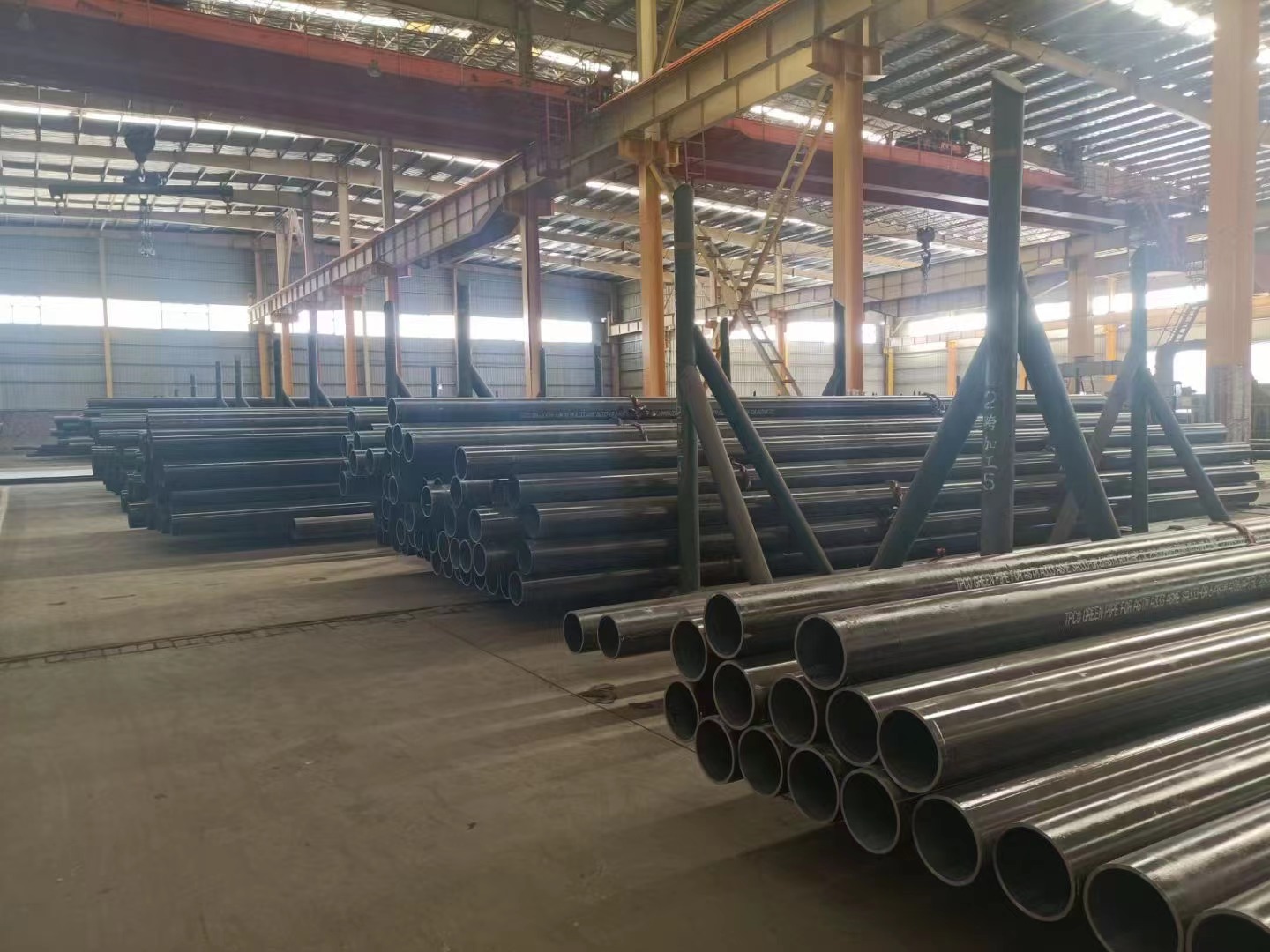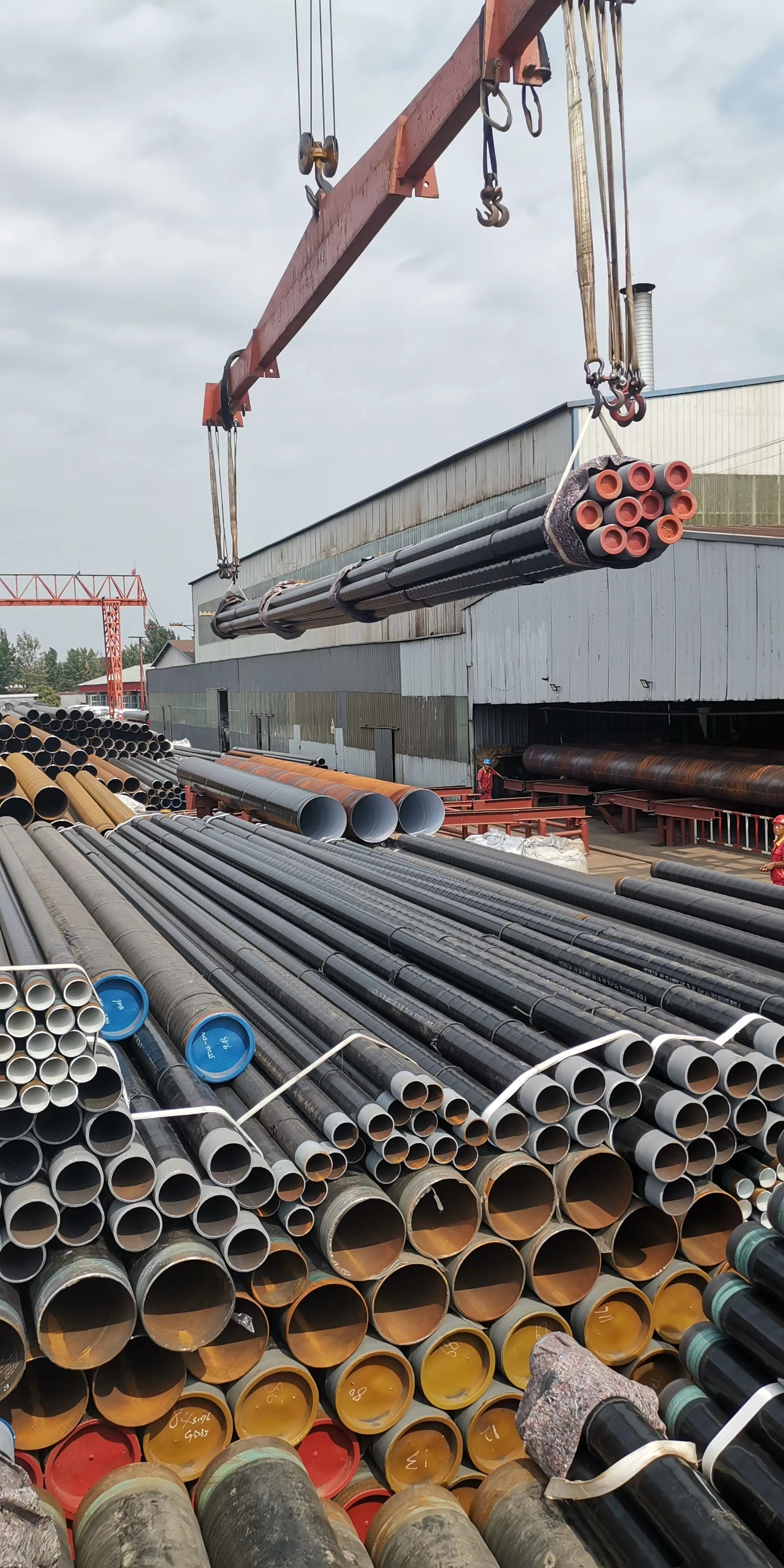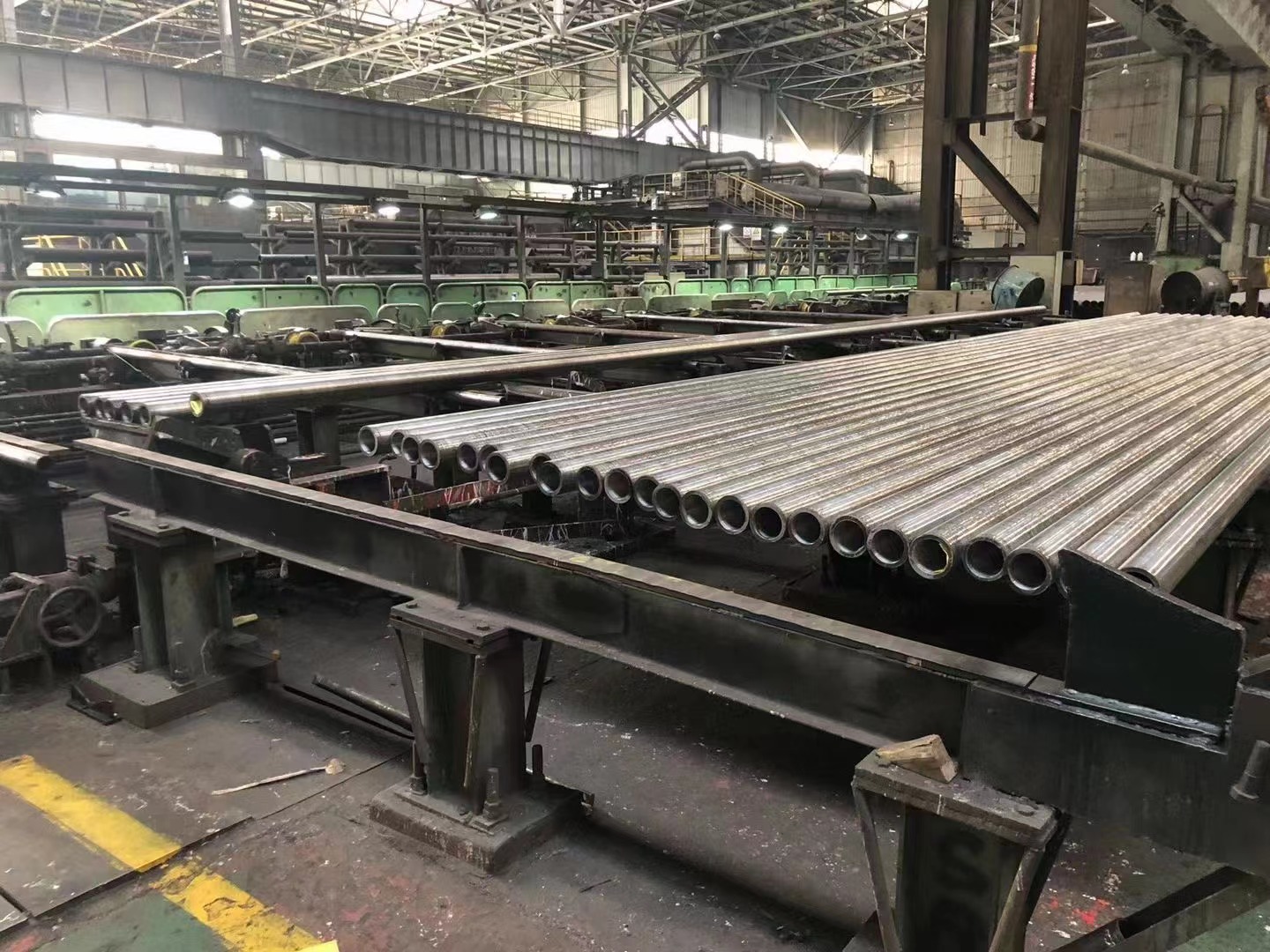Storing, handling, and transporting steel pipes require precise procedures to uphold their quality and durability. Here are comprehensive guidelines specifically tailored to steel pipe storage and transportation:
1.Storage:
Selection of Storage Area:
Choose clean, well-drained areas away from sources emitting harmful gases or dust. Clearing debris and maintaining cleanliness is vital for preserving steel pipe integrity.
Material Compatibility and Segregation:
Avoid storing steel pipes with substances that induce corrosion. Segregate various steel pipe types to prevent contact-induced corrosion and confusion.
Outdoor and Indoor Storage:
Large steel materials like beams, rails, thick plates, and large-diameter pipes can be safely stored outdoors.
Smaller materials, such as bars, rods, wires, and smaller pipes, should be housed in well-ventilated sheds with proper covering.
Special care should be given to smaller or corrosion-prone steel items by storing them indoors to prevent degradation.
Warehouse Considerations:
Geographic Selection:
Opt for enclosed warehouses with roofs, walls, secure doors, and adequate ventilation for maintaining optimal storage conditions.
Weather Management:
Maintain proper ventilation during sunny days and control moisture on rainy days to ensure an ideal storage environment.

2.Handling:
Stacking Principles:
Stack materials securely and separately to prevent corrosion. Utilize wooden supports or stones for stacked beams, ensuring a slight slope for drainage to prevent deformation.
Stacking Height and Accessibility:
Maintain stack heights suitable for manual (up to 1.2m) or mechanical (up to 1.5m) handling. Allow adequate pathways between stacks for inspection and access.
Base Elevation and Orientation:
Adjust the base elevation based on the surface to prevent moisture contact. Store angle steel and channel steel facing downward and I-beams upright to avoid water accumulation and rust.

3.Transportation:
Protective Measures:
Ensure intact preservation coatings and packaging during transportation to prevent damage or corrosion.
Preparation for Storage:
Clean steel pipes before storage, especially after exposure to rain or contaminants. Remove rust as necessary and apply rust-preventive coatings for specific steel types.
Timely Usage:
Use severely rusted materials promptly after rust removal to prevent compromising quality due to prolonged storage.

Conclusion:
Strict adherence to these guidelines for storing and transporting steel pipes ensures their durability and minimizes the risk of corrosion, damage, or deformation. Following these specific practices tailored to steel pipes is crucial for maintaining their quality throughout the storage and transportation processes.
Post time: Dec-15-2023
